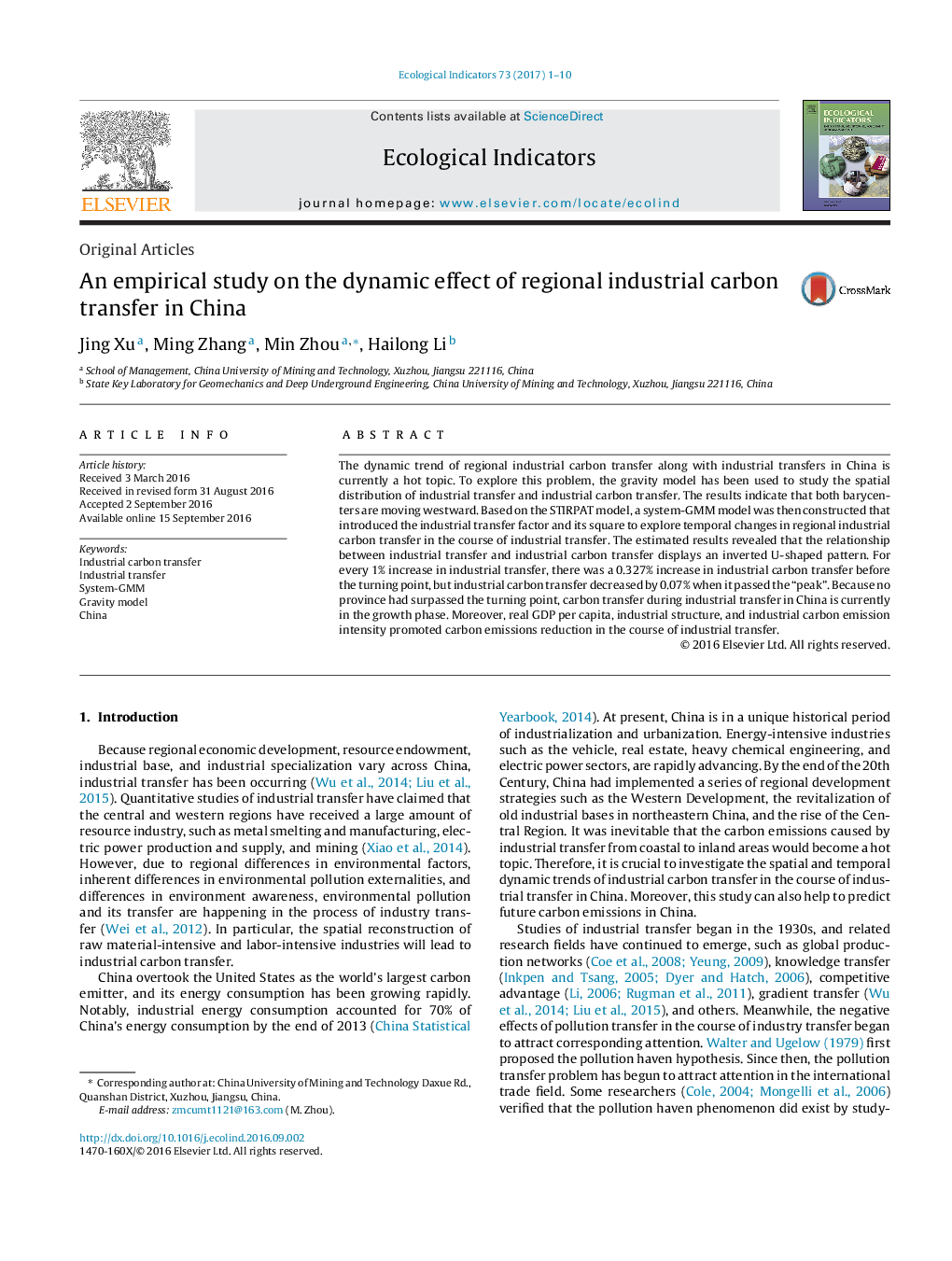| Article ID | Journal | Published Year | Pages | File Type |
|---|---|---|---|---|
| 6292519 | Ecological Indicators | 2017 | 10 Pages |
The dynamic trend of regional industrial carbon transfer along with industrial transfers in China is currently a hot topic. To explore this problem, the gravity model has been used to study the spatial distribution of industrial transfer and industrial carbon transfer. The results indicate that both barycenters are moving westward. Based on the STIRPAT model, a system-GMM model was then constructed that introduced the industrial transfer factor and its square to explore temporal changes in regional industrial carbon transfer in the course of industrial transfer. The estimated results revealed that the relationship between industrial transfer and industrial carbon transfer displays an inverted U-shaped pattern. For every 1% increase in industrial transfer, there was a 0.327% increase in industrial carbon transfer before the turning point, but industrial carbon transfer decreased by 0.07% when it passed the “peak”. Because no province had surpassed the turning point, carbon transfer during industrial transfer in China is currently in the growth phase. Moreover, real GDP per capita, industrial structure, and industrial carbon emission intensity promoted carbon emissions reduction in the course of industrial transfer.
